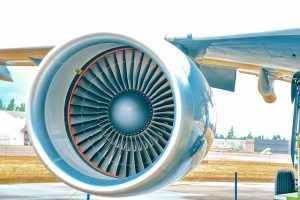
Not all jet engines are the same. There are over a half-dozen different types of jet engines, some of which include turboprop, ramjet, pulsejet and turbojet. Turbojet is one of the oldest types of jet engines. Turbojet engines are highly efficient at fast speeds, making them a popular choice among commercial airlines. To learn more about turbojet engines and how they work, keep reading.
The Basics of Turbojet Engines
Turbojet engines are jet engines that, like other jet engines, generate propulsion by discharging or expelling heated air. They feature a combustion chamber in which they burn fuel and air. As they burn this mixture, turbojet engines will discharge heated air. You can find turbojet engines in commercial airplanes, civilian airplanes and military aircraft.
How Turbojet Engines Work
How do turbojet engines work exactly? The process begins by drawing air through an intake. Turbojet engines feature an air intake, which is typically located near the front of the engine. Air will flow into this intake, at which point it will be redirected to the engine’s interior.
After entering the engine, the air will become compressed. Turbojet engines feature a set of rotating blades. Known as compressors, these rotating blades are designed to compress the air.
The next step in the process is combustion. Combustion involves the burning of fuel and air. Turbojet engines will inject fuel into the same combustion chamber where the compressed air is located. A spark will then ignite the mixture of fuel and compressed air, thereby generating hot, high-pressure exhaust gas.
The exhaust gas generated by the combustion is expelled out the rear of the turbojet engine. This rearward expulsion allows for forward propulsion. As the exhaust gas is discharged out the rear of the turbojet engine, the airplane will be propelled forward.
Turbojet vs Turbofan Engines
Many people assume that turbojet engines are the same as turbofan engines. While they are two of the most common types of jet engines, though, there are nuances between them.
Both turbojet and turbofan engines have an air intake. The main difference between them is that turbofan engines only use a portion of this air for combustion; the rest of the air is discharged as exhaust. Turbojet engines, in comparison, use nearly all of this air for combustion. The combustion process generates exhaust gas that propels the airplane forward.
In the past, turbojet engines were more popular. Today, most commercial airplanes use turbofan engines.



